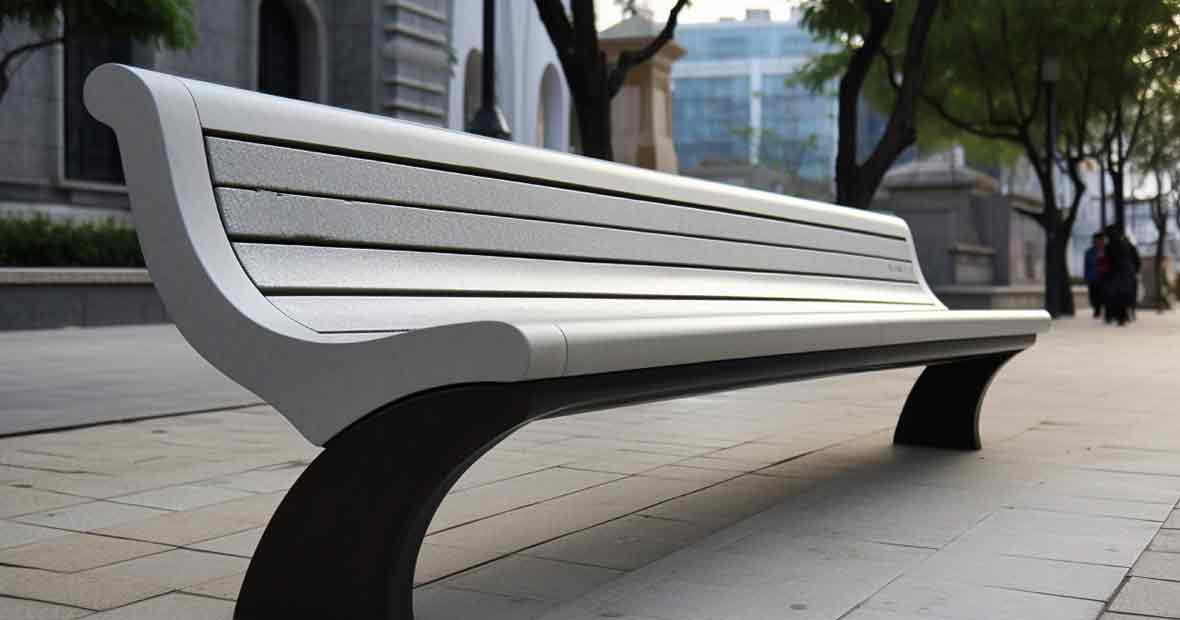
Breathing life into urban locales takes more than just mundane urban planning. Instead, a dash of creativity, coupled with an understanding of the societal dynamics at play, can make all the difference. This sentiment rings particularly true in the evolving realm of street furniture design. With the right touch, mundane benches, bike racks, and light posts transform into works of art, fueling urban regeneration and revitalization. This transformation goes beyond mere aesthetics - it has the potential to reshape the architectural identity of cities, creating spaces that residents connect with and take pride in. This piece delves into these concepts, highlighting the role of innovative street furniture design in revitalizing public spaces.
Creative Street Furniture Design: A New Approach to Urban Regeneration
As cities evolve, urban regeneration has emerged as a significant trend, focusing on the revitalization of public spaces through innovative means. One such means is the introduction of creative street furniture design, a new approach that breathes life into urban landscapes.
Revitalizing Cities through Creative Design
Urban regeneration has been given a fresh perspective with the adoption of creative street furniture design. This innovative practice redefines public spaces, rendering them more engaging and welcoming. From park benches to lamp posts, creative design adds an artistic touch that blends functionality with aesthetics. It reimagines mundane structures and transforms them into artistic installations that encourage interaction and engagement.
Street Furniture's Role in Urban Regeneration
Street furniture plays a pivotal role in the urban regeneration plan. It enhances the physical appeal of cities and contributes to sustainability. Creative street furniture, with its unique designs, not only beautifies the cityscape but also promotes the efficient use of public spaces. It fosters community interaction, thereby creating a sense of belonging among city residents.
Comparing Traditional and Creative Approaches in Street Furniture Design
Traditional street furniture focuses mainly on functionality, often overlooking the aesthetic appeal. On the other hand, creative street furniture design offers a balanced mix of utility and aesthetics. This new approach prioritizes the creation of engaging and interactive open spaces, thereby contributing significantly to urban regeneration initiatives. To delve deeper into this subject, detailed insights can be obtained by following this link.
Exploring the Social Impact of Creative Street Furniture in Public Spaces
Public spaces play a crucial role in fostering social interaction and community engagement. The design and layout of these spaces, including the creative use of street furniture, can significantly affect how people perceive and interact within these areas. Creative street furniture has been identified as a key element in revitalizing public areas, improving the quality of life for urban dwellers, and promoting a sense of belonging within the community.
However, integrating creative street furniture into public spaces presents numerous challenges. Careful urban planning and furniture design, tailored to the needs and desires of the community, are essential to ensure successful integration. Recent trends and innovations in creative street furniture highlight the environmental benefits of using sustainable materials, contributing to the creation of green and healthy public spaces.
The influence of creative street furniture extends beyond community engagement to local tourism and economy. It can enhance the aesthetic appeal of public spaces, attracting tourists and stimulating local businesses. Furthermore, creative street furniture contributes to the safety of public spaces, providing natural surveillance and promoting a sense of security among residents and visitors alike.
Architectural Identity and the Role of Street Furniture in City Development
Street furniture, from benches to lamp posts, plays a significant role in maintaining this identity while fostering local life. The development of a city can be greatly influenced by the design and placement of these everyday items.
Street furniture contributes to the aesthetic and functional aspects of urban life. The design of these structures often mirrors the architectural style of surrounding buildings, creating a cohesive visual experience. For instance, cities with a historical backdrop might opt for classic designs that complement their traditional architecture. This not only maintains the city's historical charm but also enhances its cultural identity.
Simultaneously, the role of street furniture extends beyond aesthetics. It plays a foundational role in city development. Carefully designed and strategically placed furniture can boost foot traffic, encourage local businesses, and foster a sense of community. Hence, it becomes vital for city planners to consider street furniture as a significant element in urban development plans.
Moreover, embracing creative designs in street furniture can help in revitalizing public spaces. For example, cities around the globe have successfully modernized their urban landscapes while preserving their architectural identity by adopting innovative street furniture designs.
Therefore, understanding the role of street furniture in city development and its contribution to architectural identity is essential for maintaining the cultural and historical essence of urban spaces, all while fostering local life.